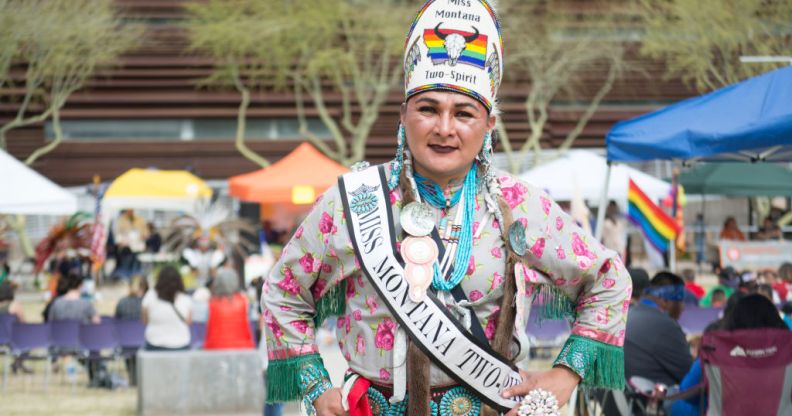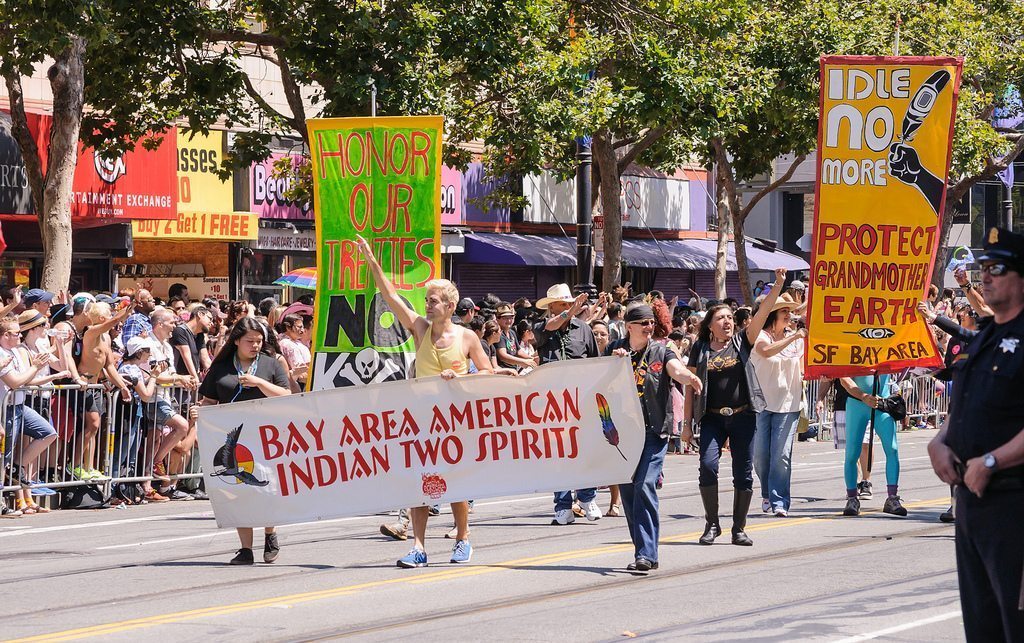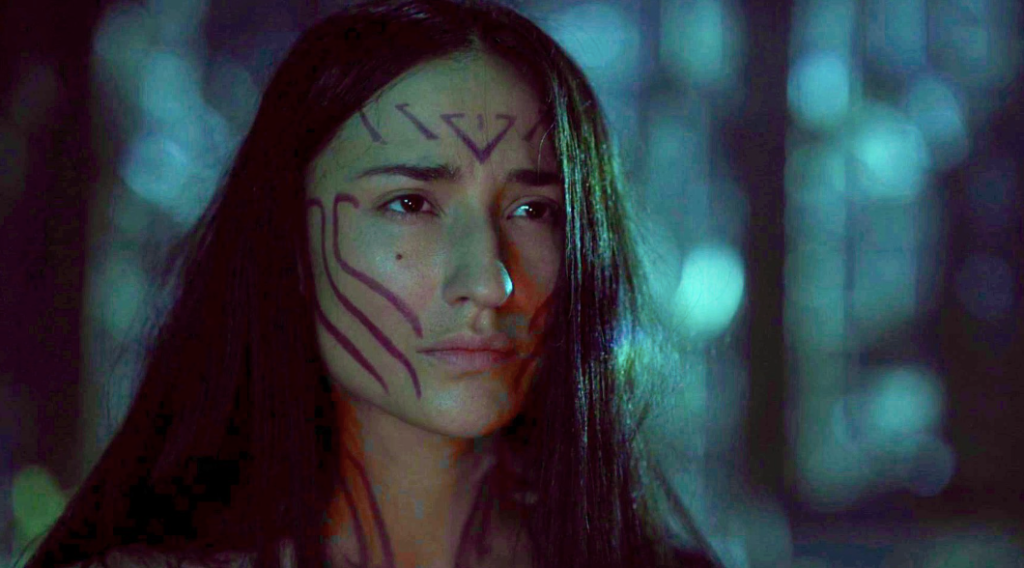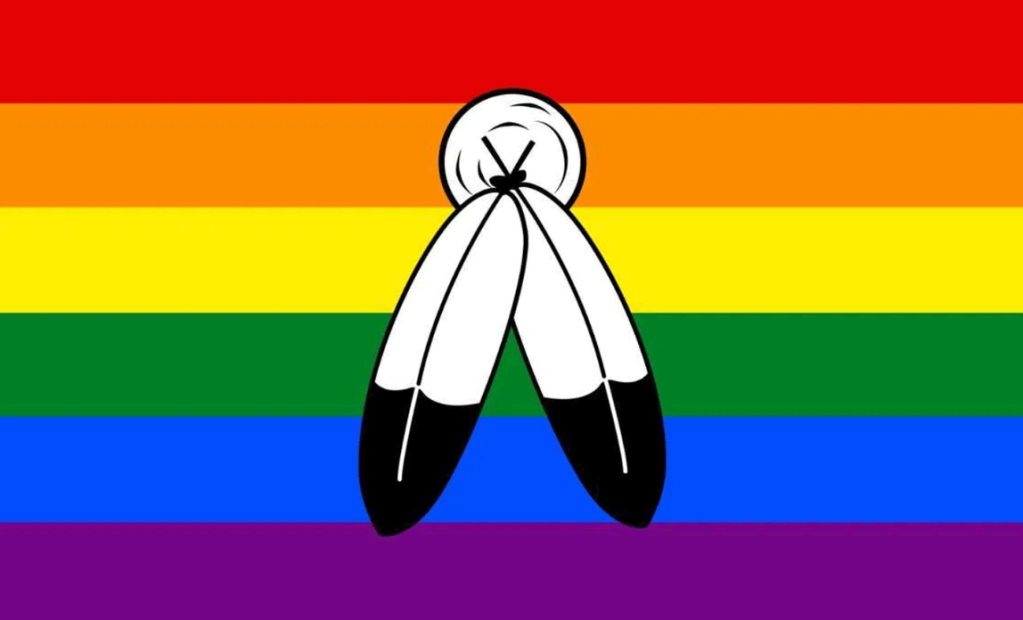Are Two-Spirit people part of the LGBTQ+ community? Here’s what the term means

Travis Goldtooth, who goes by the moniker “Buffalo Barbie,” attends Arizona’s first Two-Spirit Powwow on March 9, 2019 in Phoenix, Arizona. (Getty)
Travis Goldtooth, who goes by the moniker "Buffalo Barbie," attends Arizona's first Two-Spirit Powwow on March 9, 2019 in Phoenix, Arizona. (Getty)
Many people have encountered the phrase “Two-Spirit” or “2S” when reading about gender identity and exploring the global transgender experience. But what is 2S in LGBTQ+? Let’s find out.
Two-Spirit has been mentioned quite a lot in the news recently as well, as latest hero to take up the mantle of Marvel’s most famous archer, Hawkeye, is Charli Ramsey – a non-binary and Two-Spirit Native American.
People who identify as genders outside of the binary have many options when it comes to describing their identity – but if you’re wondering whether the term Two-Spirit is meant for you, the first thing to know is that it is a term solely used by native and indigenous people in North America.
Two-Spirit people are an essential part of native and indigenous communities but using the term when you are not native or indigenous would be considered cultural appropriation.
Similarly, India for over 2,000 years, has been home to communities of gender non-conforming people and trans women called “hijira”, but you wouldn’t refer to yourself as a hijira unless you were part of that group. They’re even mentioned in the ancient text the Kama Sutra, where they’re referred to as the third sex.
The term was formally adopted in the early nineties but dates back centuries. So what exactly does it mean?
What is the definition of 2S/Two-Spirit?

Two-Spirit (2S) is a very broad umbrella term for gender-variant peoples and diverse sexual identities within Indigenous communities. OUT Saskatoon explains that the identity is “specific to being Indigenous, in that the identity is a direct acknowledgement of the disruption of Two-Spirit teachings that took place when first-contact between Indigenous peoples and settlers was made” and the ongoing impact of colonization.””
OUT Saskatoon continues: “(It) is meant to be an umbrella term that points to the important roles that (2S) people held prior to colonization; however, as an umbrella term, specific teachings, roles, meanings, and language must come from the community.
“For example a Cree (2S) person from the plains area could go by aayahkwew (roughly translates to “neither man nor woman”) while a Mohawk ‘Two Spirit’ person could go by Onón:wat (I have the pattern of two spirits inside my body). Furthermore, the teachings, roles, and responsibilities for a Two Spirit person differs from community to community.”

In many indigenous communities, 2S people are considered neither men or women but rather occupy a distinct, alternative ‘third gender’ status.
According to the The Federal Health Program for American Indians and Alaska Natives, “Two-Spirit people were typically described in terms of their preference for and achievements in the work of the ‘opposite’ sex or in activities specific to their role. Among the Navajo, Two-Spirit males often became weavers, usually women and men’s work, as well as healers, which was a male role… (2S) females engaged in activities such as hunting and warfare, and became leaders in war and even chiefs.”
The identity was introduced by the Elder Myra Laramee at a 1990 gathering in Winnipeg. She described having a vision of her Anishinaabemowin name niizh manidoowag; which roughly translates to having the ability to be neutral through the lens of having both a feminine spirit and masculine spirit within one’s body.
Are 2S people part of the LGBTQ+ community?
In many ways, it depends on the individual person and how they view themselves.
Having said that, Two-Spirit as a contemporary umbrella term is included as part of the Indigenous LGBT2QQIA (lesbian, gay, bisexual, transgender, Two Spirit, queer, questioning, intersexual, asexual) community.
Do Two-Spirit people have a Pride flag?

The 2S pride flag is not an agreed-upon design, but variants are used by indigenous communities online to share their identity.
It was designed by an anonymous user on Tumblr in 2016.
The original version contains a traditional rainbow Pride flag, with two feathers to signify two spirits or genders and a circle to indicate unity.
Some people have taken the symbol and placed it on transgender, non-binary, or progress Pride flags as well.

